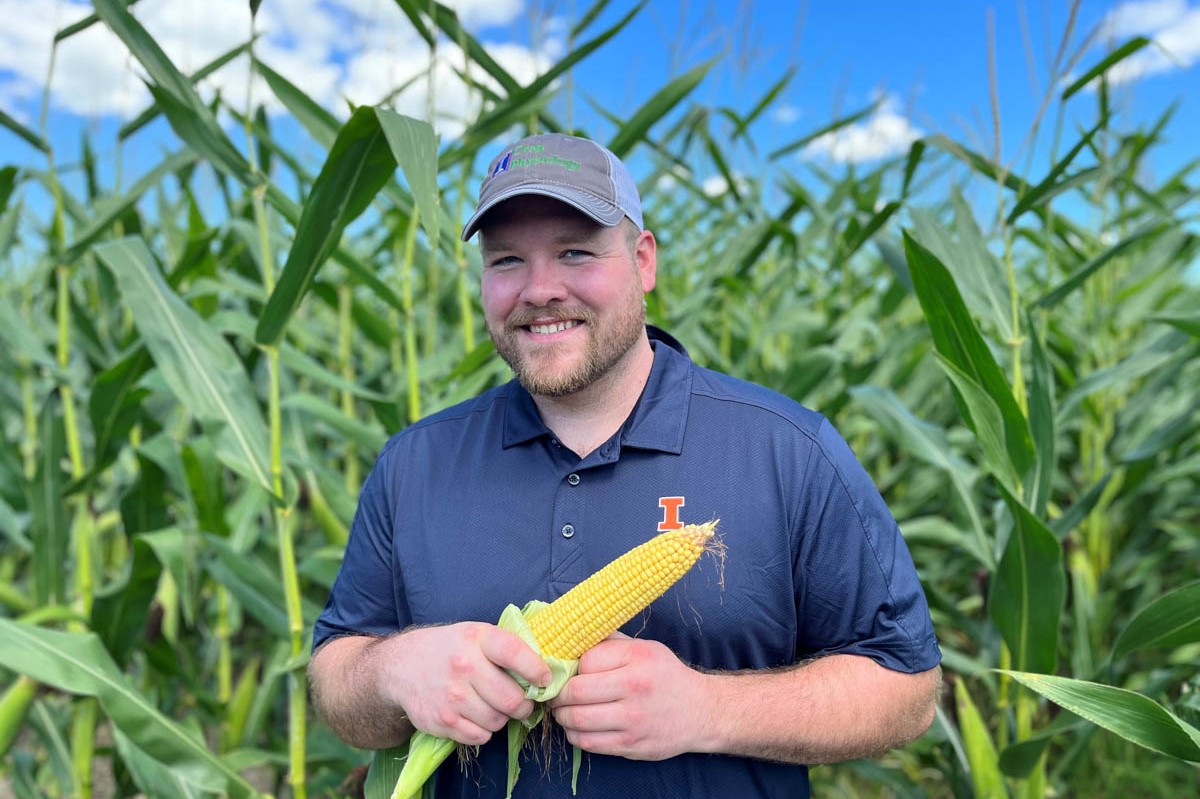Biological growth for crops
Biological products are a rapidly growing market and have their place used alongside good agronomic management, but farmers and growers need to understand the products and know where best to use them in their system. Words Heather Chalmers.

The market for biological crop products looks set to take off in New Zealand, driven by an increasing awareness by both growers and consumers of sustainable farming practices which reduce environmental impact.
Biologicals encompass a range of products derived from natural sources. They include biopesticides, bio-fertilisers and bio-stimulants and are often promoted as a way to foster a holistic approach to crop management.
United States expert Dr Connor Sible says biological products have a place, but to use them successfully growers need to look beyond the marketing claims and improve their understanding of how they work.
From the Crop Physiology Laboratory, Department of Crop Sciences at the University of Illinois, Connor spent a week in New Zealand as a guest of the Foundation for Arable Research.
He says that over the past five years the US has seen a boom in biological products including new technologies and management tools designed to enhance fertiliser use, reduce crop stress, stimulate soil microbial activity, manage crop residues and improve soil health. He expects this boom to reach NZ very soon even though many of the biologicals available in the US, including nitrogen-fixing bacteria, are unlikely to be commercially released in NZ because of our stringent regulations regarding imported material, particularly products containing live and genetically-modified material.
He notes that while the industry has a lot of start-ups, the big agchem and fertiliser companies are now involved. Sales are growing at 14% a year, with the industry expected to be worth US$27.9 billion by 2028.
Growth in the market is being driven by limited supply and development of new synthetic chemical modes of action, rising resistance to existing chemistry and increased grower interest in using alternative products.
“It seems biologicals do everything these days and are often marketed as the magical remedy to resolving all problems on the farm.”
“It seems biologicals do everything these days and are often marketed as the magical remedy to resolving all problems on the farm. While the advertising of these products may sometimes sound too good to be true, the reality is that these new tools can have a positive influence, but only if they are utilised in the proper way.”
To achieve success with a biological input, it is key to understand that while all products in this group may be considered a biological, they are very different from each other, Connor says. These include biopesticides, post-harvest products, plant growth regulators, inoculants and bio-fertilisers.
Biological efficacy depends on the type of product utilised. To optimise the benefit, it is key to understand how the product works and where to incorporate it into your system. “For the best chance of success, know your starting point and have a goal of what you wish to achieve.”
As his mentor Professor Fred Below, also from the University of Illinois, is known for the Seven Wonders of the Maize Yield World, Connor has developed seven recommendations to assist growers considering using biologicals.
Recommendation #1: Ensure the basics are covered, such as seed, fertility and pest management. Biologicals are a next step input, not a replacement for good agronomic management.
Recommendation #2: Know if your product is alive or dead. Beneficial microbes like nitrogen (N) fixing bacteria, P-Solubilising microbes and Mycorrhizal fungi are “the living” and bio-stimulants like enzymes, humic/fulvic acids, marine extracts and sugars are “the dead”. Living products require careful handling and commitment to ensure they remain viable from delivery to application.
Recommendation #3: Know what biological you are working with. Go beyond the basic category and know some specifics. How does this product differ from others like it?
Recommendation #4: Nitrogen- fixing inoculants are a third source of N, helping to supplement when the soil or fertiliser falls short. However, cutting the N rate too much may limit final yield potential.
Recommendation #5: Biologicals that influence phosphorus (P) need placement near the root. Released P may quickly be bound back to the soil system, whereas proximity to root increases the chance of uptake. Products include P-solubilising bacteria which increase availability of mineral P.
Recommendation #6: Biologicals for residue management, predominantly naturally occurring Bacillus species, need time to work into the residue. Spray on a cloudy day or in the evening to let an overnight dew work the microbes into the residue/soil.
Recommendation #7: Stress mitigating bio-stimulant applications need to be proactive not reactive. The crop needs time to build defence so it is able to tolerate the stress when it arrives.
Connor also suggested questions that growers should ask sale representatives promoting biological products.
- What does the product do? Then, how does it do that?
- What handling procedures are needed? Detail is good. If they say “It should be okay if” this is a red flag.
- What is it compatible with?
- What is it not compatible with? Most have a list. If not, it’s a red flag.
- Where will it work best? The answer is almost never “the whole farm”.
- What is the shelf life, both unopened and opened?
“Look for confidence in replies and honesty when they do not know,” says Connor.





